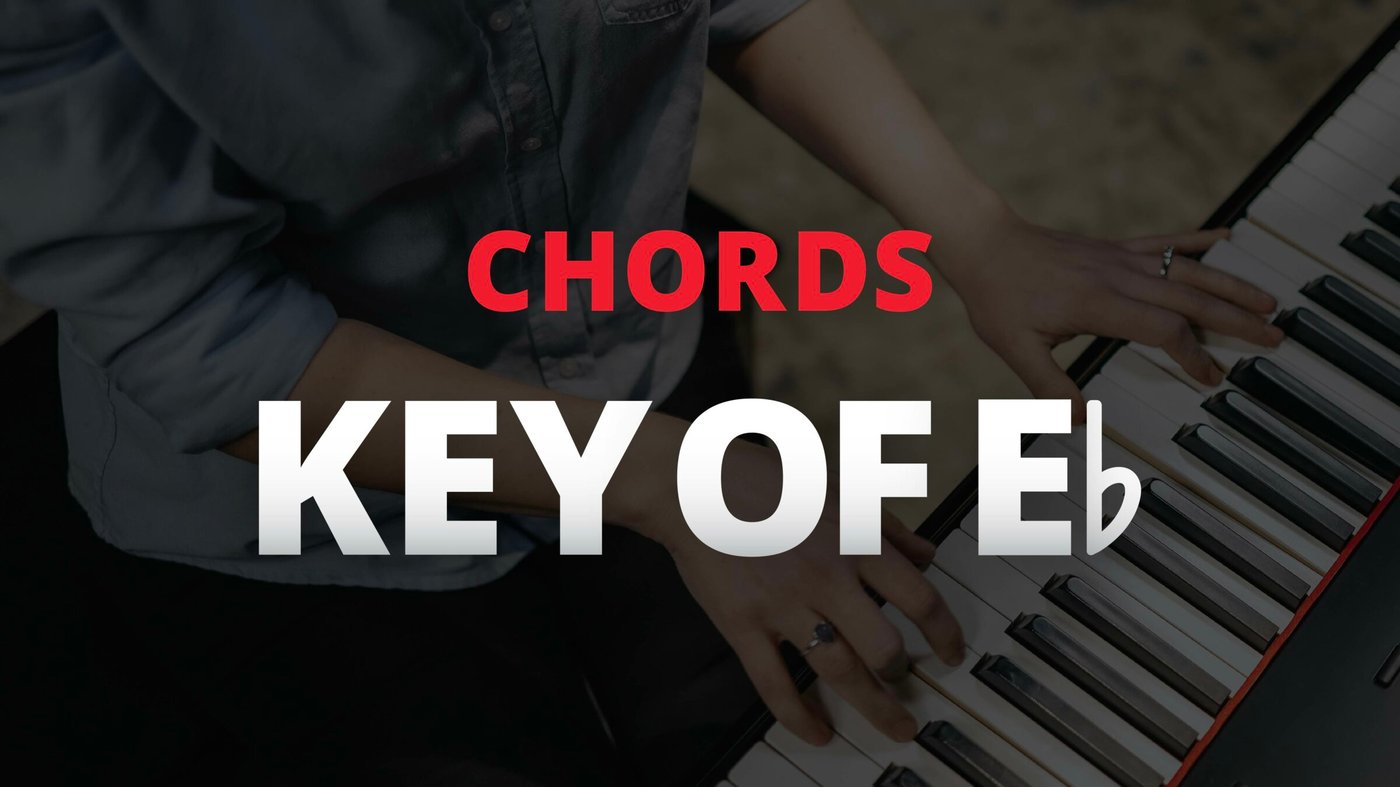
Click on the chord symbol for a diagram and explanation of each chord type:
E♭ | E♭m | E♭sus2 | E♭sus4 | E♭maj7 | E♭m7 | E♭7 | E♭dim7 | E♭m7♭5
Chord Symbol: E♭ or E♭maj
The E♭ major triad consists of a root (E♭), third (G), and fifth (B♭). The distance between the root and the third is a major third interval (or four half-steps), and the distance between the third and fifth is a minor third interval (or three half-steps). Major triads have a “happy” sound.



E♭ MINOR TRIAD
Chord Symbol: E♭m
The E♭ minor triad consists of a root (E♭), third (G♭), and fifth (B♭). The distance between the root and the third is a minor third interval (or three half-steps), and the distance between the third and the fifth is a major third interval (or four half-steps). Minor triads have a “sad” sound.



E♭ SUSPENDED 2
Chord Symbol: E♭sus2
In the E♭sus2 chord, the third of the E♭ major or minor chord (G or G♭) is replaced (“suspended”) with the second note (F) of the E♭ major scale.

E♭ SUSPENDED 4
Chord Symbol: E♭sus4
In the E♭sus4 chord, the third of the E♭ major or minor chord (G or G♭) is replaced (“suspended”) with the fourth note (A♭) of the E♭ major scale.

Chord Symbol: E♭maj7
A major 7 chord is a major triad with an added seventh. The distance between the root and the seventh is a major 7th interval.




Chord Symbol: E♭m7
A minor 7 chord is a minor triad with an added seventh. The distance between the root and the seventh is a minor 7th interval.




Chord Symbol: E♭7
A dominant 7th chord is a major triad with an added seventh, where the distance between the root and the seventh is a minor 7th interval.
You can also think of dominant 7th chords as being built on the fifth note of a major scale and following that scale’s key signature. For example, E♭7 is built on E♭, the fifth note of A-flat major, and follows A-flat major’s key signature (B♭, E♭, A♭, D♭).




Chord Symbol: E♭dim7
A diminished 7th chord is a four-note-chord where each note is a minor third apart. You can think of diminished 7th chords as a “stack of minor thirds.”




Chord Symbol: E♭m7♭5
The half-diminished chord is also called the “minor seven flat five” chord. It is a minor 7th chord where the fifth is lowered by a half-step.




Subscribe to The Note for exclusive interviews, fascinating articles, and inspiring lessons delivered straight to your inbox. Unsubscribe at any time.
Pianote is the Ultimate Online Piano Lessons Experience™. Learn at your own pace, get expert lessons from real teachers and world-class pianists, and join a community of supportive piano players. Learn more about becoming a Member.


By signing up you’ll also receive our ongoing free lessons and special offers. Don’t worry, we value your privacy and you can unsubscribe at any time.
We use cookies for traffic data and advertising. Cookie Policy »